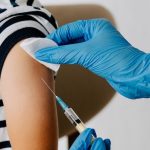Scientists find new drug to treat both COVID-19 and cancer
Vaccination can provide life-saving protection against COVID-19.
But scientists are still searching for ways to treat severe infections, including in people who cannot get vaccinated...
Nearly 90% of people living with long COVID have not returned to full health
In a study from University College Cork and elsewhere, scientists found that nearly 90% of those living with long COVID have not returned to...
Long-term effects of COVID-19 on people with diabetes
The genetic makeup of patients with diabetes or those predisposed to the disease makes them more prone to post-COVID inflammatory conditions.
Vitamin D level could determine COVID-19 severity
A recent study from Trinity College Dublin found that vitamin D can determine the severity of COVID-19.
The finding highlights the association between vitamin D...
Diabetes drug metformin linked to less severe COVID-19
In a study from the University of Minnesota, scientists examined adults with type 2 diabetes who were taking metformin, a commonly prescribed diabetes medication.
They...
Full vaccination lowers risk for heart disease, stroke after COVID-19
Full vaccination against COVID-19 is associated with a lower risk for heart disease and stroke 31 to 120 days after COVID-19.
Why some people get severe COVID-19 while others don’t
A large number of people are currently contracting COVID-19. Fortunately, most of them are experiencing only mild symptoms, largely thanks to the high vaccination...
Alcohol abuse may increase risk of severe COVID-19
Some people are known to be more vulnerable than others to severe COVID-19, including older adults (age 65+) and those with certain pre-existing health...
Full vaccination more effective in preventing spread of COVID-19 than boosters
A 4.2% increase in the number of people having full vaccination led to a 54% reduction in case rates across Europe—despite the detection of the highly infectious omicron.
Many older people get shingles after COVID-19 infection
Shingles are also called herpes zoster. It is a disease caused by the reactivation of the chickenpox virus. It causes a painful blistering rash.
A...










